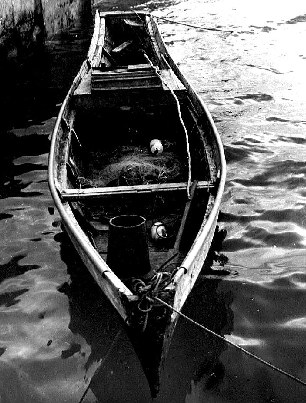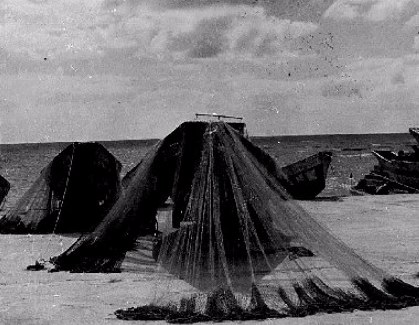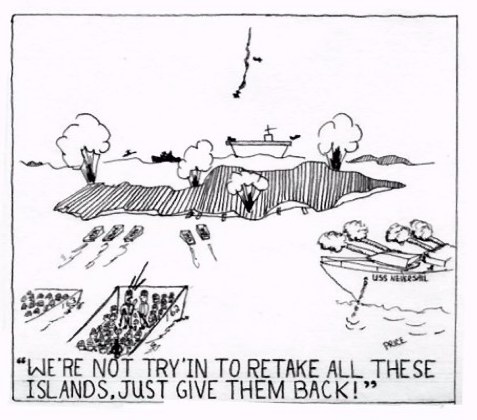Battle For Okinawa: World War II | home
Introduction to Okinawa
 Okinawa Prefecture consists of 160 primary islands, and occupies the southern half of the Ryukyu archipelago. The islands are spread over 1,000 km east and west, and 400 km north to south. With a total land surface of 2,265 square km, Okinawa Prefecture is the only Japanese prefecture in the subtropical zone, and is famous for its blue seas and white sandy beaches.
Okinawa Prefecture consists of 160 primary islands, and occupies the southern half of the Ryukyu archipelago. The islands are spread over 1,000 km east and west, and 400 km north to south. With a total land surface of 2,265 square km, Okinawa Prefecture is the only Japanese prefecture in the subtropical zone, and is famous for its blue seas and white sandy beaches. Approximately 3 1/2 million tourists visit Okinawa every year.
The Okinawan Islands are located at the confluence of many Asian lands and cultures: Korea and Japan to the north, China to the west, and the countries of Southeast Asia to the south. Thus ideally situated, the once independent Ryukyuan Kingdom engaged in a prosperous overseas trade for many centuries.
During World War II, a heavy concentration of U.S. military bases was established on Okinawa, which remained strategically important to U.S. interests through the post-Cold War era. As a result of Okinawa's pivotal location and international relationships, it assimilated many of the cultures it came in contact with in order to create a unique culture of its own.
The Earliest Inhabitants of Okinawa
Did you know that snakes live in some islands of Okinawa but are nonexistent in others? The snakes exist almost in every other island, not because of the sulfur, but 200,000 years ago (Cenozoic late Pleistocene), some islands submerged under the sea and reemerged above sea level to form a circle through Southeast Asia to the Kyushu of Japan.
Possibly, the earliest known inhabitants of Okinawa, known as the "Yamashita-Cave Man", came from the south and lived in a cave at Yamashita, near Naha, approximately 30,000 years ago.
The circle was later unformed by the submersion of some of the islands. Human bones that were excavated from the lower stratum and pieces of charcoal from the upper stratum of the cave was dated some 32,100 (±1,000) years by the Carbon 14 Dating. Other human bones were excavated from a fissure at the stone cutters' yard at Minatogawa village of Gushichan. They are presumably 18,000 years old. It is unknown where they came from but they probably survived by hunting using natural implements such as rough stone and implements made of bones and horns.
Shellmounds in Okinawa
After the Minatogawa's, there had been a long blank period (18,000 through 4,000 years ago) in the history of Okinawa. After more than 450 shellmounds were discovered, Okinawa's history resumes. The oldest shellmounds are about 4,000 years old and the latest, approximately 1,000 years. This period is known as "Ryukyu Shellmound Age" and it is chronologically divided into 3 periods: Early, Middle and Late period. They show us that the activities of the island inhabitants and had already exchanged cultures and were very influenced with Kyushu, Japan. The culture of the early period was purely indigenous but the late period shows the formation of villages on the sand hills where people lived on collecting plants while the villages by the seashore were formed by people who engaged widely in fishing.
 The Early Culture of Okinawa
The Early Culture of Okinawa The prehistoric cultures of Ryukyu Islands are classified into 3 spheres: Northern, Central and Southern.
Northern:
Tanegashima and Yaku-shima islands Culture sphere of Japan (Jomon and Yayoi culture)
Central:
Amami-Shima and Okinawa main islands. Influenced by the culture of the main islands of Japan but had it's own unique pattern of culture.
Southern:
Sakishima islands (Miyako & Yaeyama islands) Their prehist-oric culture were an entirely different pattern of culture from that of Japan proper and central Okinawa.
Photo Right; Tools of the Fisherman's Trade A traditional Dragon-Boat; bucket in the foreground has a glass bottom for seeing into the ocean, a round mallet for clubbing fish. a homemade bamboo pole, a fishing net with bleach bottle floats, and a small gas engine hidden from view. The boat has a rudder that is moved by pulling lines on either side of the boat. The boats are completely handmade using no nails; but they use butterfly dowels ham-mered into precut holes and it is quite a treat to see one of them built in this traditional pattern. (Bob Price Photo)
Their culture more closely resembled that of the southern origin (southeast Asia)
The shellmound age that lasted approximately 3,000 years ended around the 10th century AD and the Gusuku (castle) Age began. With this new era brought the cultivation of rice and wheat. Many earthenware were introduced from Japan proper. Villages were established on the hill area near the sea and, later in the 11th and 12 century, as the population increased, new villages were established on the hills inland. A new style of earthenware was made. They used iron tools and raised cattle, which were used for cultivation. Judging from the various fragments of ceramics excavated from the sites of this period, open trades with China and Southeast Asian countries were evident.
Gusuku (Castle) Age and Aji (The Rulers)
In the 12th century, the rulers known as "Aji" appeared. "Gusuku" was their residential castle, the sites of which are scattered throughout the Ryukyu Islands.
In the 14th century, 3 strong rulers divided Okinawa into 3 countries known as Hokuzan, Chuzan and Nanzan. If you know Japanese history, you may see that the Shogun ruled Japan during the 7th through 16th centuries but strong rulers had always fought for their homelands.
The famous Japanese chronicle "Nihon-Shoki" recorded that a mission from Okinawa was sent to the imperial Court of Yamato during the 6th century. This lead to the granting of official ranks to 360 people of Okinawa in the 7th century.
These people are considered to be the influential families later identified as Aji. In this manner, Okinawa was placed under the reign of the Yamato Court but was treated as a special region without the burden of taxation as in Japan proper because of the great distance involved. However, the war all over Japan lost the sight of Okinawa.
The Sobe Fishing Fleet in for the afternoon drying their weighted nets
 In the 11th century, the "Genji" or Minamoto, was fighting for the Shogun rank. Shunten, who was considered a son of Tametomo Minamoto*, ascended the throne in Okinawa. King Shunten's activities (1166-1237) are recorded in the Chuzan-Seikan, the oldest document left in Okinawa. Although he stayed on the throne for 51 years, his historic relics have never been found.
In the 11th century, the "Genji" or Minamoto, was fighting for the Shogun rank. Shunten, who was considered a son of Tametomo Minamoto*, ascended the throne in Okinawa. King Shunten's activities (1166-1237) are recorded in the Chuzan-Seikan, the oldest document left in Okinawa. Although he stayed on the throne for 51 years, his historic relics have never been found.Tametomo Minamoto (1139-1177) was a General and great warrior and uncle of the Shogun Yoritomo Minamoto. He became a great warrior in Kyushu and helped the father of the Emperor, but at Hogen-rebellion, he lost the war and was sent to Izu Oshima island where he later killed himself. There are many books about him as a great warrior with many episodes, one of which is the "Chinsetsu Yumihari-zuki" written in 1807.
The story tells the legend that Tametomo escaped from the Izu Ohsima Island but the ship was overtaken by a storm and drifted to Unten-minato of Nakijin, Okinawa. Tametomo married a sister of Ohzato Aji of Nakijin. The Royal History Book of Shuri (the capital of Ryukyu kingdom) has written that their son Sute- maru , became the first Kingn of Okinawa "Shunten".
Okinawa, the largest island of the Ryukyu chain, located in the East China Sea, was the threshold of the allied invasion of Japan during World War II. Naha, the capital of the island and the chief port, accommodated vessels up to 3,000 tons and possessed the most highly developed airfield on the island. The Americans wanted to capture the island and the port city because doing so would cut the enemy's air communications through the Ryukyu and flank its sea communications to the south. Furthermore, Okinawa provided air bases that would allow easy strikes by the allies on the enemy's home islands of Kyushu and Honshu, the industrial heart of Japan.
The operation, Code Named Operation Iceberg under the strategic command of Admiral Raymond A. Spruance, began with 5th Fleet air strikes against Kyushu on 18 March 1945, and initial landings on Okinawa itself on Easter Sunday, 1 April. An enormous assemblage of ships participated in the operation, during which 36 of them of destroyer size or smaller were lost, most to the heaviest concentration of kamikaze attacks of the war. Almost 8,000 enemy aircraft were destroyed in the air or on the ground.
As part of the action, on 7 April the last remnants of the Imperial Japanese Navy ventured forth, only to be met by overwhelming Navy airpower. Japanese super-battleship Yamato, a cruiser, and four destroyers were sunk in a one-day battle. As a result of securing Okinawa, the supply lanes of the East China Sea were blocked, isolating all southern possessions still in Japanese hands; and the last obstacle in the path to the Japanese Home Islands was cleared.
Intelligence sources helped develop the campaign. Documents, prisoners taken on Pacific island battlefields, former residents of Ryukyu, Japanese publications, and aerial photographic reconnaissance aided the development of American strategic policy for capturing the island. In collecting photographic material, the Americans used B-29's and carrier-based planes, with most of the pictures being taken between January and March of 1945. Preliminary air raids on Okinawa ceased on March 1, 1945.
Battle Action Against Protest Groups and The Japanese Red Army
 Bob Price Cartoon: The Torii Typhoon; 1974
Okinawan troubles with the US Military continue
marked in the past by high profile problems with Chemical Agents used in Vietnam, B-52's used for bombing the NVA and more recently actions of individual servicemen involved in rapes, murder and felonies.
A large contingent of the Japanese Red Army which is Communist Supported is determined to drive the US Forces from Okinawa. Recent Rapes and assaults by US servicemen on the local population have fanned the flames of unrest.
The Red Army has used the media and 'liberal types' to press forward their message that the US is the 'Evil Empire' and which attempts to show the US as the Evil Aggressors during World War II; Secret Communist Indoctrination Centers abounded on Okinawa; 1974. Their targets were US Servicemen and women unwittingly recruited by Red China and elements of the Japanese Red Army.
|
A three week interval followed, during which American forces prepared for invasion.
Then, from March 25-30, 1945, the naval ships of the Amphibious Support Force bombarded the coast of Naha. Of note is the fact that enemy batteries did not fire on naval vessels during their bombardment. The photographs revealed the three main defense areas on the island -- Naha, the Hagushi beaches, and the Yonabaro-Nakagusuku Bay; but they held fire to conceal their positions.
During this time, aircraft from Task Force 58, a group specializing in aerial search and reconnaissance missions, aided the campaign by bombing enemy air bases and small boats which were discovered to be suicide attack ships containing depth charges.
Despite the U.S. aircraft cover, Japanese fighter planes launched from mainland Japan made 50 concentrated suicide raids on American ships between March 26 and 31. An enormous assemblage of ships participated in the operation, during which 36 of them of destroyer size or smaller were lost, most to the heaviest concentration of kamikaze attacks of the war. Almost 8,000 enemy aircraft were destroyed in the air or on the ground.
Source:
http://www.liu.edu/but04/japan/okinawa/okinawa.html
http://faculty.tamu-commerce.edu/sarantakes/Photos.html
Torii Typhoon 1974